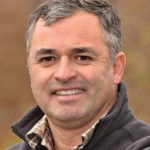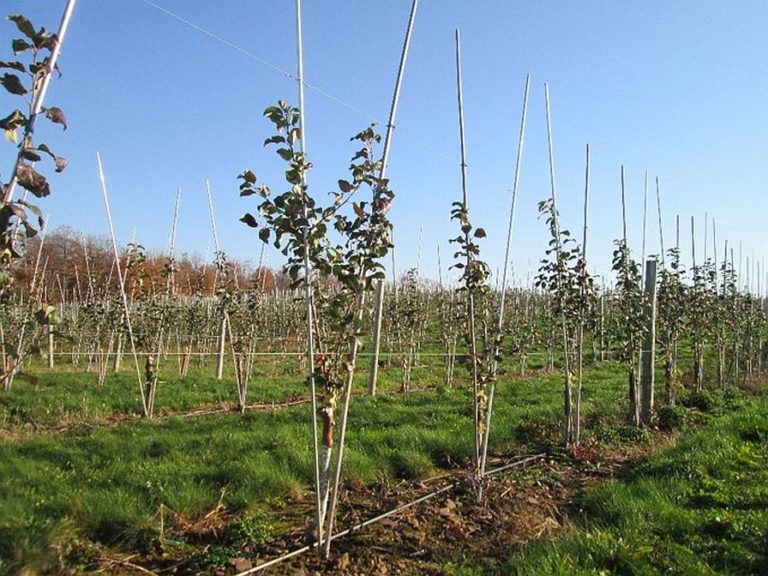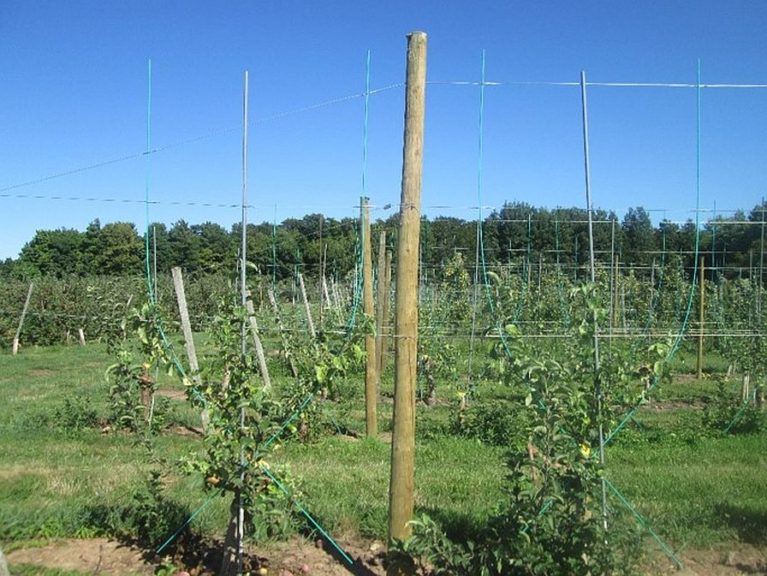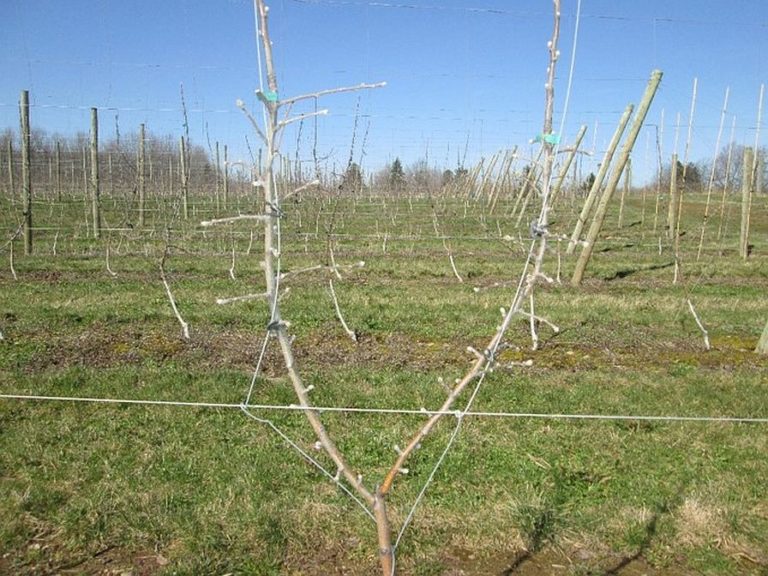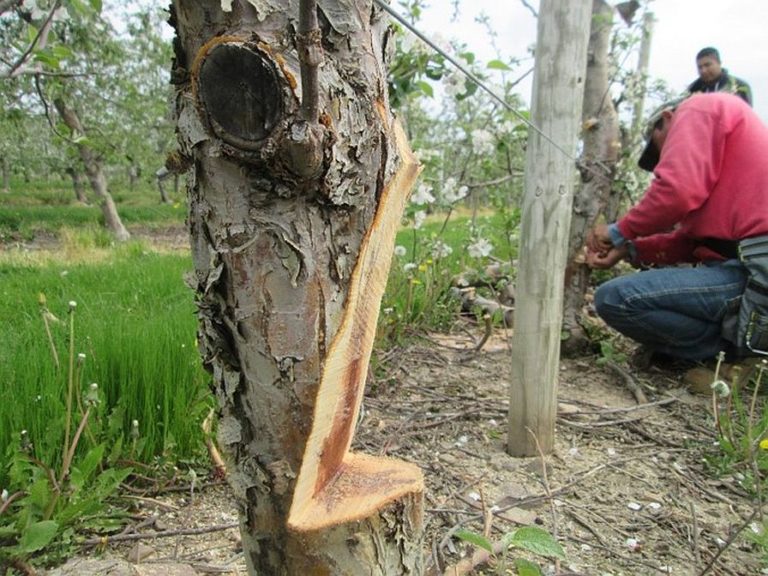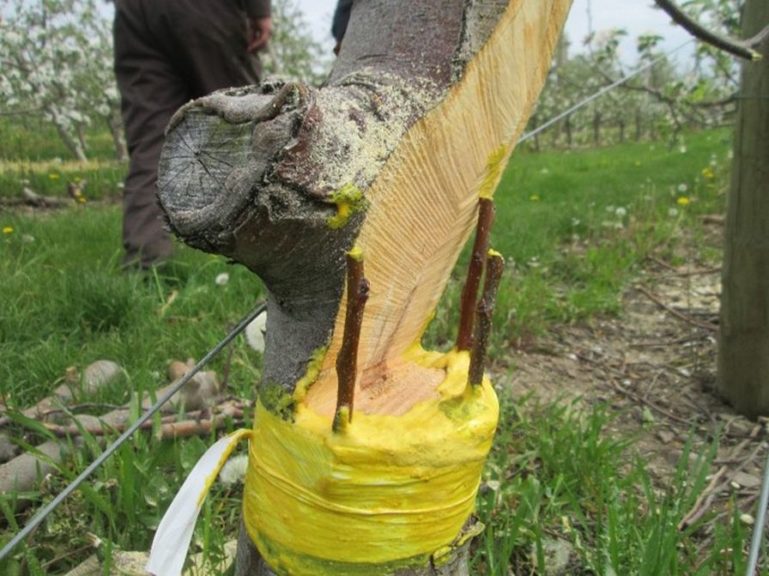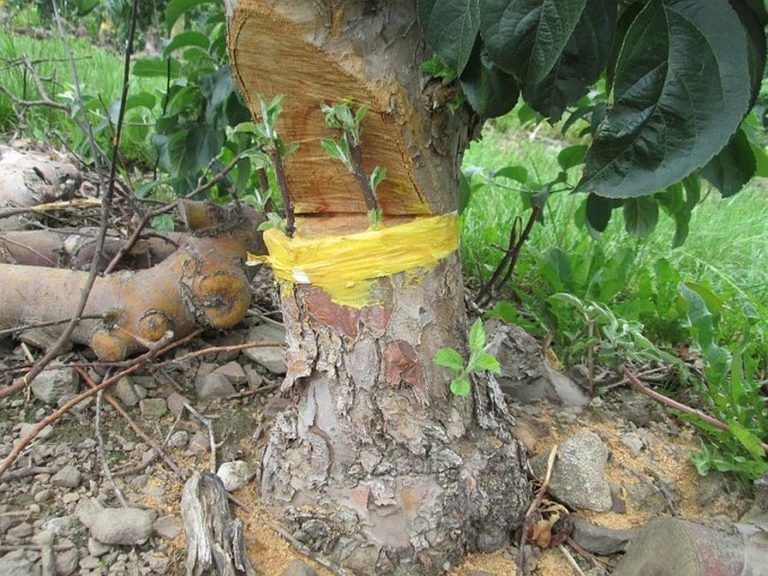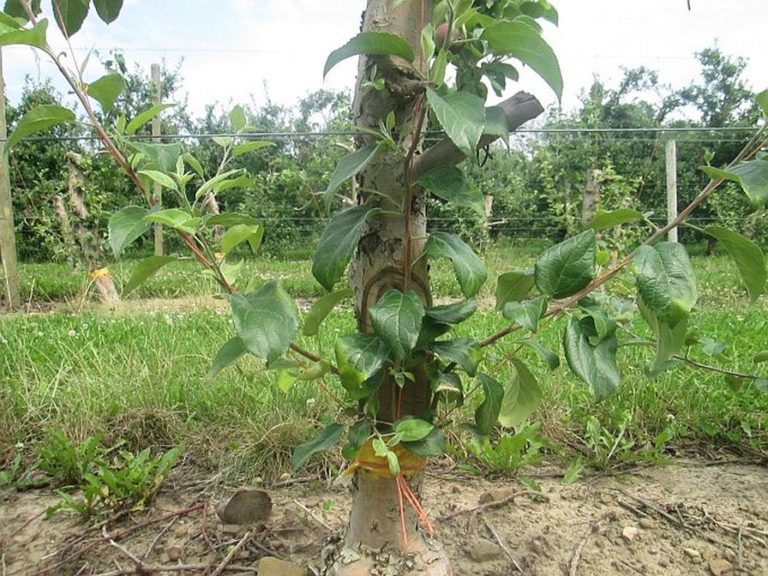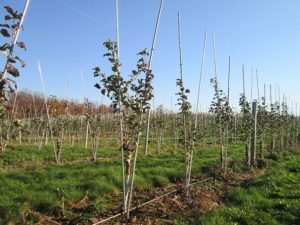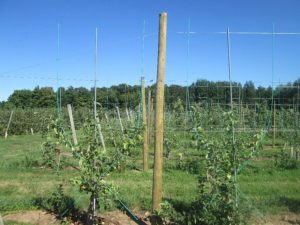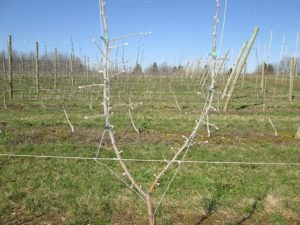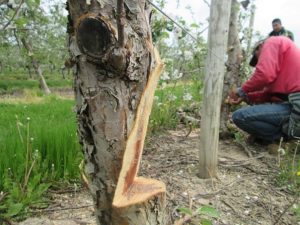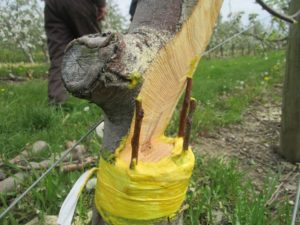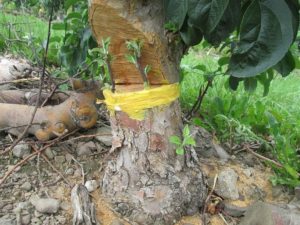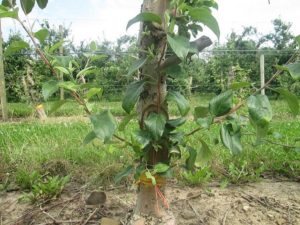How to Transition to Multileader Production
If you decide to grow more than one leader per root, you must devote significant attention and energy to implement a more rigorous, labor-intensive, and time-sensitive management program, especially the first two or three spring and summer seasons. If trialed or done suddenly without much previous experience or little help, it can challenge even the most skilled apple growers.
There is an ideal step-by-step process as you learn to execute, uniformly train, fill, summer-prune, manage, and finally crop a more tight spacing in and between rows. This new, practical knowledge of growing more and more single spindle trees is very applicable, and fundamental, for the successful adoption and management of two-, three-, or four-leader trees, or multileader trees.
Ideally, you should first master the growing of the traditional spindle tree at 3-by-12-foot. Once you get used to the training needs of the traditional system, feel comfortable, and realize the full benefits of the technology, you may or may not decide to increase even further the in-row planting spacing. This critical step has forced some growers to figure out how to grow and manage a tighter, planar, two-dimensional canopy. From this moment, they have started using short pruning techniques instead of long pruning techniques. Some of the principles for short pruning techniques will also be very useful and applicable for the production of multileader trees.
Innovative growers in my area, Western New York, are currently transitioning from the traditional 3-foot in-row to 2- or 2.5-foot in-row planting spacing. There have even been new plantings and a few on-farm test rows using 9, 18, and 28 inches in the in-row planting spacing. Most of this current transition to higher planting densities has occurred by using one-leader tree per root. There has also been a significant amount of learning by top-working trees and growing the new cultivar on two- or three-leader trees instead of a one-leader tree.
Growers who have recently attempted to grow a multileader tree and have not previously mastered the management of higher planting densities or the training of two- or three-leader trees via grafting, have sometimes struggled and learned the “hard way” when establishing a multileader system. If done properly, the multileader system requires a lot more training of leaders, and consequently, is much more labor-intensive in the first two or three years than traditional spindle trees.
In some cases, the lack of multileader canopy uniformity (due to irregular leader height, spacing between leaders, absence of leaders, or poor development of short fruiting units along the leader) has required the use of more intensive spring and summer pruning to influence, correct, or redirect the growth where it is needed to quickly maximize canopy growth and uniformity.
Before you embark on a big multileader project, I recommend you first get very familiar with growing spindle trees at 2-by-11-foot or 2.5-by-11.5-foot spacing. You can also get a significant amount of experience by top-working (via bark grafting) old and/or underperforming apple blocks with a high-value cultivar.
Grow Trees by Top-Working
After the grafts start growing, use two or three plastic ties (or pieces of bamboo, fiberglass, or wire stabilizers) and train the new shoots, initially to a semi-vertical, then vertical position for a multileader system (Figure 1). The basic idea is to produce a two-dimensional planar tree canopy, comprised of several thousand leaders per acre.
Carefully place and twist the new shoot to the plastic twine or tape it (preferred) gently as it grows to prevent breakage from wind. If the orchard is not protected with a deer fence, place a piece of soap on each leader tip and reposition it every 7 to 10 days as the terminal tip grows during the season. A well-supported leader will always grow faster and more vertically than one that is unsupported. Always tape the leader 4 to 6 inches below the wire and use a tree clip as the leader passes each successive wire.
Don’t leave too many nurse limbs because excessive shoot growth will outcompete and weaken your leaders. A nurse limb is one of the main scaffolds temporarily left to reduce the shock and help feed the grafts.
Leave only one or two nurse limbs and prune the rest. Make sure your new leaders will get full sun exposure during the summer, and if possible, leave only nursing foliage in the opposite side of the row. Maximize the growth of the two or three leaders and prune anything that outcompete each leader. Always leave a longer stub when summer pruning and, if needed, contain any excessive vegetative regrowth with directed Apogee (BASF) sprays.
Continue supporting the terminal leader as many times as needed during the summer. Summer-prune to influence growth where you want it. Make sure your canopy is calm so flower induction and return bloom is secured the following year. Lastly, because the existing orchard grafted over had a support and training system less than ideal, if any, you will need to re-engineer and install a more robust trellis by using taller in-line posts (12-foot or higher posts) and more horizontal wires spaced not more than 25 inches apart (use at least five to six wires). Maximize future multileader fruit yields by making sure you grow a tall two-dimensional canopy to get the full benefits of the wider spacing between rows.
Making the Leaders
If after grafting in the orchard in the first year, you only produced several whips and did not select and train two or three leaders for a multileader system, you can still select them during winter pruning. Later you can spray Maxcel (Valent) on the two or three leaders you left per root to stimulate their branching in the orchard at 10 to 14 days after budbreak. Use 500 ppm or 3.2 ounces/gallon of formulated product. Maxcel can be applied with a backpack sprayer using a single nozzle or with a spray tower (direct nozzles to the lower part of the canopy).
Ideally, the closest you top-work the trees to the ground the better for the multileader system. However, many times the new training of leaders starts approximately at 24 to 28 inches above the ground (based on the lowest positioning of a limb nurse) and the right vertical spacing between leaders (18 to 20 inches) is seldom achieved until around 3 to 4.5-foot height. I call this the “inverted triangle zone” which make canopy management and pruning a bit more challenging in the tight spacing between leaders in this zone.
A better approach to correctly grow well-spaced leaders, more evenly, vertical, and at a lower height, is to graft old trees below the line of nursing limbs, like Eric and Robert Brown III of Orchard Dale Fruit Company, LLC, in Waterport, NY, did. The Browns made a deep and angled fresh-cut on one side of the trunk which left a smooth fresh cambial surface. Old trees were grafted with three sticks inserted on the outer part of the trunk at 6 to 8 inches above the ground in May (Figure 2).
The new leaders grew from 2 to 4 inches per week, more slowly at first, then more rapidly. A few new shoots were also formed along the existing stock. These were removed as they appeared through the growing season. Side shoots that developed on the three leaders were pinched out by always leaving a stub (to secure limb renewal) and leader growth was maximized. All leaders were trained with plastic twine and additional wires. Tall in-line posts were installed to secure a robust trellis for future multileader fruit production. The old trunk section will be removed this coming 2018 dormant pruning season.
In other apple regions with less severe and more predictable weather conditions for early top-working (i.e. Washington or Chile), some growers have completely eliminated the need for nursing limbs by grafting old trees with several sticks (40% to 50% more sticks to produce a three-leader or a four-leader tree) early in the spring. This method has also proved to be successful as several of the shoots that grew from the sticks helped to absorb the excess vigor. Then the best-positioned 3 or 4 shoots were successively selected (the rest eliminated) and then became the leaders of the future multileader system.




